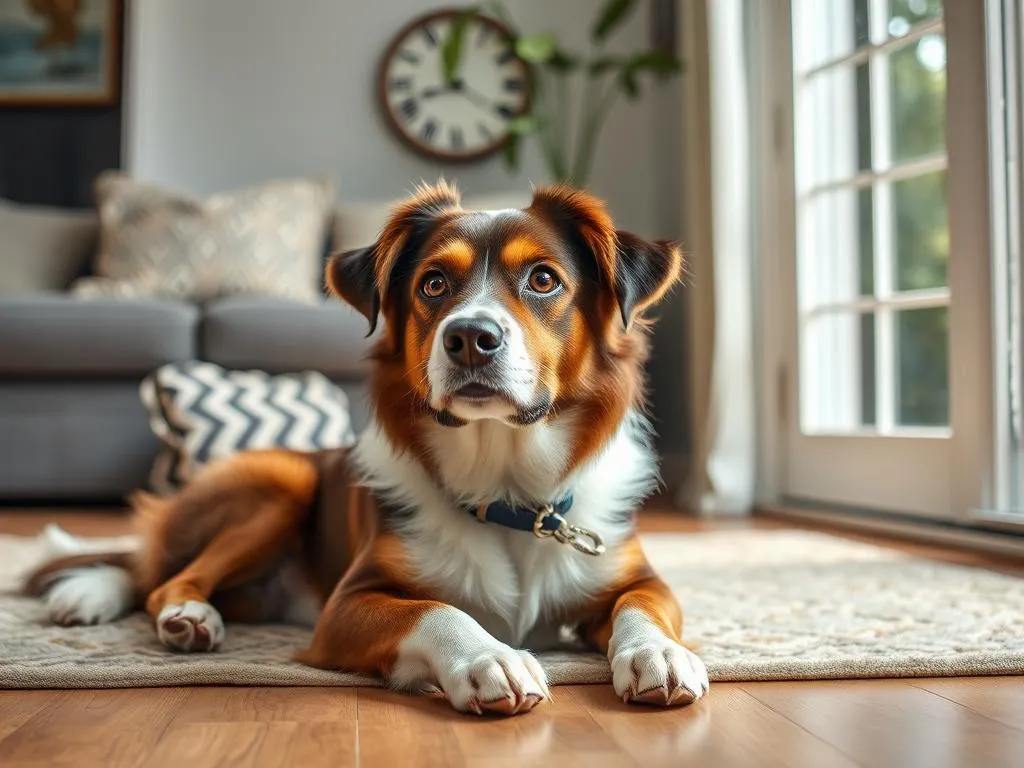
Introduction
Creating a dog-friendly home is essential for both your furry friend and your peace of mind. With the increase in pet ownership and a surge in dog adoptions—over 67% of U.S. households now own a pet, with dogs being the most popular choice—it’s more important than ever to ensure that our homes are safe and welcoming for our canine companions. This article aims to provide practical tips and advice on how to make home dog friendly, ensuring that your dog feels loved, comfortable, and safe in your living space.
Understanding Your Dog’s Needs
Physical Needs
Dogs have specific physical requirements that must be met to ensure their well-being. This includes providing space for exercise and play. Both indoor and outdoor areas should be designed to allow your dog to move freely and burn off energy.
Additionally, designate areas for sleeping and resting. A cozy corner in your living room or a quiet space in your bedroom can serve as a perfect sleeping nook. Make sure this area is away from high-traffic zones to give your dog a sense of security.
Mental Needs
Just as important as physical needs are the mental needs of your dog. Dogs thrive on mental stimulation, which can reduce boredom and associated behavioral issues. Engaging activities like puzzle toys, training sessions, or interactive games can keep your dog’s mind sharp and engaged.
Consider incorporating a variety of activities to challenge your dog mentally. For instance, hide-and-seek games or simple obedience training can provide both fun and stimulation.
Emotional Needs
Building a bond with your dog is crucial for their emotional health. Creating a secure and loving environment involves spending quality time with your dog, understanding their body language, and responding to their needs. Regular affection, praise, and attention help strengthen this bond and ensure your dog feels part of the family.
Dog-Proofing Your Home
Identifying Hazards
To successfully make a home dog friendly, it’s vital to identify potential hazards. Common household items such as chemicals, certain plants, and even human food can pose significant risks. Make it a habit to keep cleaning products, medications, and toxic plants out of reach.
Also, pay attention to electrical cords and small objects that could be swallowed. Secure cords with clips or covers and store small items in cabinets or drawers.
Safe Spaces
Creating dog-friendly zones within your home can greatly enhance your dog’s safety and comfort. Living areas and playrooms should be free from hazards and equipped with soft surfaces for lounging.
Using baby gates or barriers can help establish boundaries, keeping your dog in safe areas while preventing access to stairs or rooms that may be dangerous.
Furniture Considerations
When selecting furniture, consider pet-friendly materials that are durable and easy to clean. Leather, microfiber, and tightly woven fabrics are excellent choices as they resist stains and odors better than other materials.
Arranging furniture thoughtfully can also minimize risks. Keep heavy items away from the edges of tables and ensure that low-hanging decorations are secure.
Creating a Comfortable Environment
Sleeping Areas
Choosing the right dog bed is crucial for your dog’s comfort. Look for beds that provide support and are made of washable materials. Consider the location of the bed; it should be placed in a quiet area where your dog can retreat for a good night’s sleep.
Climate Control
Maintaining a comfortable temperature is essential for your dog’s well-being. Ensure your home is well-ventilated and avoid placing your dog in areas that are prone to extreme temperatures. This is especially important during summer months when heat can pose a risk to your dog’s health.
Hygiene and Cleanliness
Keeping a clean home is vital for maintaining a dog-friendly environment. Regular cleaning routines help control pet hair and dander. Opt for pet-safe cleaning products to ensure that your cleaning habits do not pose any health risks to your furry companion.
Designated Dog Areas
Play Zones
Creating play zones can be a fun way to engage your dog. Both indoor and outdoor areas should be designed for activities like fetch or tug-of-war. Use soft mats indoors to cushion their play and ensure that outdoor spaces are secure.
Recommended toys include durable chew toys, balls, and interactive puzzles that can keep your dog entertained for hours.
Eating Areas
Setting up a designated feeding station helps create a routine for your dog. Choose an area that is quiet and away from distractions. Invest in sturdy, non-slip bowls to prevent spills and consider a mat underneath to catch any mess.
Training Spaces
Having a space dedicated to training and bonding can significantly enhance your dog’s learning experience. This area should be free from distractions and equipped with necessary training tools like leashes, treats, and clickers. Consistent training sessions in a designated space help reinforce good behavior and strengthen your bond.
Socialization and Interaction
Inviting Friends and Family
When hosting visitors, prepare your home for their dogs as well. Dog-friendly interactions can lead to positive social experiences. Ensure that your dog is comfortable and has a quiet space to retreat to if they feel overwhelmed.
Dog-Friendly Activities
Engaging in fun activities at home with your dog can enhance your relationship. Simple activities like tug-of-war, fetch, or even agility training can be both entertaining and beneficial for your dog’s physical and mental health. Establishing a routine that includes playtime, training, and relaxation can help keep your dog happy and well-adjusted.
Outdoor Considerations
Fencing and Safety
A secure outdoor area is vital for any dog owner. Secure fencing helps keep your dog safe while allowing them to enjoy outdoor activities. Ensure that gates are sturdy and that there are no gaps or holes in the fence where your dog could escape.
Outdoor Comfort
When your dog spends time outdoors, it’s essential to provide shade and water. Create shaded areas where your dog can rest and ensure fresh water is always available. This is particularly important during warmer months to prevent overheating.
Neighborhood Awareness
When walking your dog in the neighborhood, be aware of your surroundings. Use a sturdy leash and harness to keep your dog secure. Engaging with community resources like dog parks or local events can provide additional socialization opportunities for your dog.
Common Mistakes to Avoid
Overlooking Safety
One of the biggest mistakes dog owners make is overlooking safety. Regularly check your home for potential hazards and make necessary adjustments. This includes securing items that could fall or be knocked over by an excited dog.
Neglecting Mental Stimulation
Failing to provide adequate mental stimulation can lead to boredom and anxiety in dogs. Signs of boredom may include destructive behavior or excessive barking. Incorporating interactive toys and regular training sessions can help keep your dog engaged.
Ignoring Routine
Consistency is key for a dog’s well-being. Establishing a daily routine for feeding, play, and training helps your dog feel secure and understand expectations. Irregular schedules can lead to anxiety and confusion, so strive to maintain a predictable routine.
Conclusion
In conclusion, making your home dog-friendly involves understanding and addressing your dog’s physical, mental, and emotional needs. From dog-proofing your home to creating comfortable and designated areas, every detail counts in ensuring a loving environment for your furry friend. By actively engaging with your dog and taking the necessary steps to enhance their living space, you can create a happy and harmonious home for both you and your dog.
Creating a dog-friendly home is not just about safety; it’s about nurturing a loving bond with your pet and ensuring their happiness and well-being. Embrace the joy that comes from sharing your home with a dog, and enjoy the rewarding experience of being a responsible pet owner.









